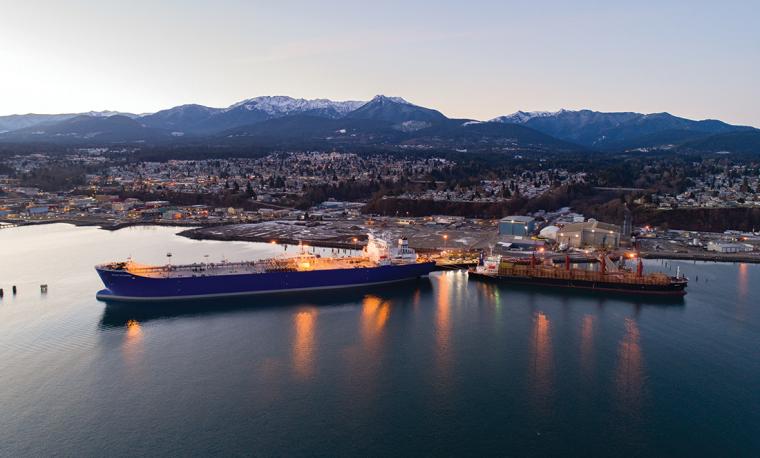
While U.S. economic growth was sluggish at 1.4 percent in the first quarter of 2024, the second saw respectable growth at 2.8 percent, and economists have estimated that the third quarter of this year will see a brisk three percent in growth. This puts the United States in good standing economically compared to much of the rest of the world.
As the economy grows, so too must the ways that goods can be transported and distributed throughout the country and across the globe. Access to market points, which include ports, airports, highways, railways, depots and warehouse facilities, must be prepared to meet the needs of a growing economy. This not only includes physical expansion and upgrades, but judicious use of digital tools to keep the flow of goods moving efficiently.
In this feature, weíll look at a snapshot of several regions around the country with robust and growing access to markets.
Arlington Heights, Illinois
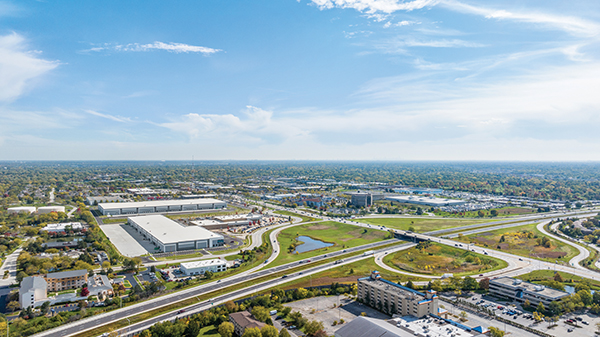
Arlington Heights serves the Chicago region as a key manufacturing, warehouse and distribution hub. The newest development designed to serve the community and the region as a whole is the Northwest Gateway Center. This 500,000-square-foot spec industrial development offers immediate access to three interstate highways (I-90, I-290 and I-355). The site is also only 15 miles from O’Hare International Airport (ORD), six miles from Chicago Executive Airport (PWK) and 34 miles from Downtown Chicago.
The two-building spec development was completed in 2023 and has space available for lease. This is the second spec industrial development constructed in Arlington Heights since the recession. The project was completed due to ongoing demand for new warehouse space with access throughout the entire Chicago Region. Energy drink company Red Bull has since leased 57,000 square feet within the facility for a distribution center.
Based on its ideal location, Arlington Heights attracts and provides warehousing and distribution of a variety of products from food to customer products, to machinery and equipment. But Arlington Heights is more than just a distribution center; the region’s businesses conduct over $1.5 billion in annual retail sales. Arlington Heights also offers an award-winning downtown area that attracts nearly 800,000 visitors annually. Several major corporations have a substantial presence in Arlington Heights, including Amazon, Frito-Lay (PepsiCo) and United Airlines.
“Arlington Heights serves as an important gateway for businesses looking to expand their footprint within the greater Chicago region,” said Michael Mertes, Business Development Manager at the Village of Arlington Heights. “The community offers over five million square feet each of industrial, commercial and office tenant space. With immediate access to three interstate highways, two Metra commuter rail stations and over 3,000 private sector businesses, Arlington Heights will continue to be a Chicagoland hub for business growth.”
Indiana
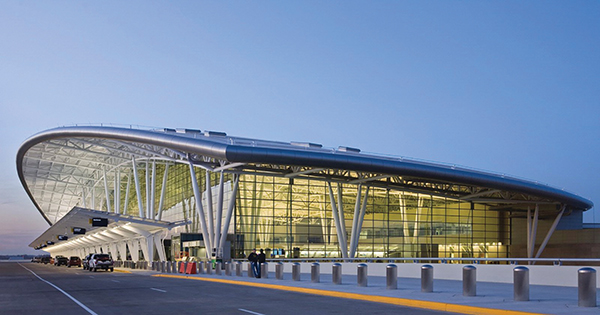
Site selection consultants and logistics and distribution companies worldwide find that available real estate, central location, an extensive transportation infrastructure, a strong work ethic and low costs make the Indy Region an ideal place to do business. In 2022, Area Development magazine ranked Indiana the number one state in the Midwest for cost of doing business. Indiana also has the fourth lowest workers’ compensation premium costs in the country.
Indianapolis has been dubbed “The Crossroads of America” for a reason – it is one of the most centrally located major cities in the U.S. Three-quarters of all businesses in the U.S. are within a day and a half’s truck drive and more interstate highway spurs intersect in the Indy Region than in any other metro area, including I-65, I-70, I-74 and I-69.
More than half of Indiana’s border is water, which includes 400 miles of direct access to two major international freight arteries, the Great Lakes and the Ohio-Mississippi River System. Located over 600 miles from an ocean, Indiana’s ports are uniquely positioned to handle international shipments at the median center of the U.S. population with the nation’s most robust transportation networks.
In 2022, the Ports of Indiana facilities — Burns Harbor, Jeffersonville and Mount Vernon — handled approximately 12.4 million tons of waterborne cargo including key commodities such as steel products, ore, coal, coke, breakbulk, grain, soybean products, bulk metals, scrap, fertilizer, ethanol, DDG, limestone, cement, other dry bulk, salt and other liquid bulk.
The vessel, barge and cargo activity at the Ports of Indiana facilities generated 49,040 direct, induced, indirect and related jobs. 11,151 of these were indirect jobs supported by $1.3 billion of local purchases and capital expenses by businesses supplying services at the terminals and by businesses dependent upon Ports of Indiana facilities for the shipment and receipt of cargo.
Indiana is in the process of expanding its access to markets via air, as well. In August, the state announced that the Indianapolis International Airport (IND) was awarded $26.6 million from the Federal Aviation Administration in a seventh round of Airport Infrastructure Grants funding totaling $289 million to 129 airports across 40 states. The Indy airport grant was one of the largest among airports selected to receive the latest round of funding. The funding will be applied to the reconstruction of IND Runway 5R-23L and Taxiway D to improve safety. In total, IND has received $146 million in federal grants for this reconstruction project. The runway is at the center of the IAA’s three-year, three-phase $295 million reconstruction project to enhance IND’s capacity. The project, which includes LED runway and taxiway lighting, is in its final phase and will be completed later this year.
Finally, in terms of rail assets, Indiana sees operation of CSX (Avon Switching Yard in Hendricks County), Norfolk Southern (Anderson Switching Yard in Madison County), The Indiana Railroad, The Indiana Southern Railroad and The Louisville & Indiana Railroad.
Lake Charles, Louisiana
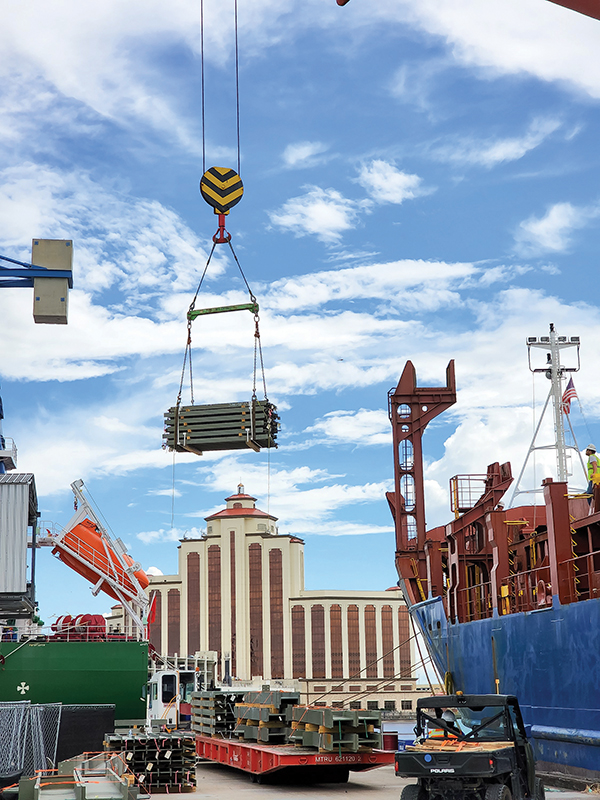
The Port of Lake Charles is the tenth busiest port district in the nation, as measured by tonnage. The Port — officially, the Lake Charles Harbor and Terminal District — was established by the Louisiana Legislature in 1924, covering 203 square miles in Calcasieu Parish. The Port of Lake Charles, operational since 1926, has expanded to include 10 transit sheds with 13 ship berths situated 34 miles inland from the Gulf of Mexico. The Calcasieu River and Ship Channel, which links the port to the Gulf, is 40 feet deep and 400 feet wide. The port’s industrial canal is three miles long with a 1,400-foot square turning basin, dredged to 40 feet and 500 feet wide, with land available for lease.
The port’s general cargo facilities boast 1.4 million square feet of transit sheds on the waterfront, with most berths having a depth of 36 feet, except for Berths 8, 15 and 15B, which are 40 feet deep. Additionally, the port owns and leases 536,000 square feet of warehouse space with concrete floors, accessible by rail and truck. The port also offers over 21 acres of open storage for various commodities and has its own short-line railroad, Port Rail Inc., with connections to Union Pacific Railroad and reciprocal agreements with BNSF and KCS.
Key cargoes handled at the port include agricultural goods, bagged rice, forest products, structural steel, alumina trihydrate, petroleum coke and other dry bulk products. Private stevedoring companies provide cranes with up to 150-ton lift capacity, and larger cranes are available in the area. The port features a private bulk grain terminal and a public Bulk Terminal No. 1 for loading and unloading ships. Notable customers include Southern Ionics, Firestone, IFG Port Holdings, Golden Nugget Casino Resort, L’Auberge du Lac Casino Resort, Cameron LNG and others.
The port recently completed a $31 million rehabilitation of Open Berth 2 and 3. Additionally, two significant construction projects have commenced: the replacement of seven smaller warehouses damaged by Hurricane Laura with a new 175,000-square-foot clear span warehouse, and the redesign and replacement of three continuous transit sheds also damaged by the hurricane. The latter project, valued at over $131 million, represents the largest contract ever awarded in the port’s history. Moreover, the port has acquired a new ship loader for its dry bulk terminal.
The port’s industrial canal is set to undergo a major upgrade, featuring the installation of newly designed bulkheads. Once installed, these enhancements will enable dredging to a depth of 40 feet, providing additional deep-water berthing capacity. This improvement will also enhance the port’s ability to accommodate more cargo, including heavy-lift cargo.
The port’s 81-acre dry bulk facility is equipped with three berths and handles cargoes such as petroleum coke, barite, rutile, alumina trihydrate and calcined coke. The general cargo facility, known as City Docks, spans 200 acres and includes 12 deepwater berths. This facility handles a variety of general cargo, including lumber, rubber, bagged agricultural commodities, alumina trihydrate, sodium hydrosulfide, steel products, windmill blades and towers and other cargo. Additionally, the port has a bulk facility with a single berth, specializing in handling aggregates, particularly limestone.
“The Alliance has worked with the Port of Lake Charles and area industry to grow our region’s economy and serve the world,” said George Swift, president and CEO of the Southwest Louisiana Economic Development Alliance, based in Lake Charles. “The port continues to be the center of the regional economy as well as a global force in shipping.”
Laredo, Texas
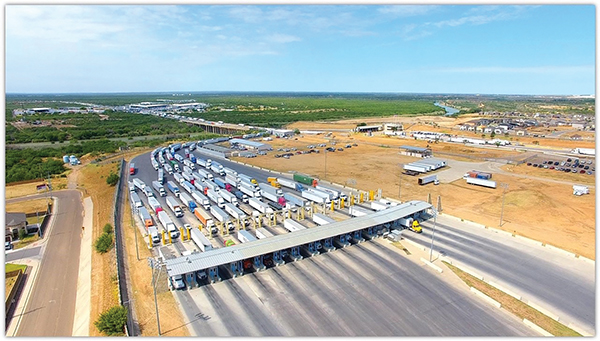
Port Laredo is a global logistics hub supporting the international supply chain, manufacturing industry and logistic centers, and it aims to help the companies that use its facilities deliver a competitive advantage. It is one of the most important land ports in North America, supporting over $319 billion in annual trade with the world.
Strategically positioned along the U.S./Mexico border, Laredo is at the convergence of all land transportation systems located on U.S. Interstate Highway 35 known as the NAFTA/USMCA Highway from its sister countries, Mexico and Canada. Laredo’s impressive trade infrastructure includes two international commercial bridges, World Trade Bridge and Colombia Solidarity, one railway international bridge and two Class 1 railways, Canadian Pacific Kansas City Railroad and Union Pacific Railroad, and soon will be the only land port with four interstate highways, I35, I69, I27 and I2.
Port Laredo continues to enhance its port infrastructure with two major projects. The first is Canadian Pacific Kansas City, which is in the process of completing the construction of its second span of the new international railroad bridge in Laredo. The completion of this new railroad bridge will allow more than 1,000 railway cars to flow north and southbound. The second project is the now-approved expansion of the World Trade Bridge, which recently received approval to construct an additional eight-lane bridge for northbound traffic adjacent to the existing eight-lane World Trade bridge. The expansion project will also construct an additional two lanes for southbound traffic.
Laredo has thousands of acres of developed, partially developed and ready-to-be developed in 50-plus industrial parks, including experienced and specialized industrial developers, and boasts an international bilingual labor force on both sides of the U.S./Mexico border. It also features exceptional education institutions such as Texas A&M International University and Laredo College.
Port Laredo continues to thrive, and for numerous reasons, its rankings are impressing Fortune 500 corporations that are relocating to the border city.
“Laredo is a vital location for the new ‘Texas Triangle’ that serves the major state coastal ports and distribution hubs for Fortune 500 industries in North America,” said Tony Arce, Jr., Interim President/CEO with the Laredo EDC. “We are an information resource for investment inquiries and are ready to work with our local partners to support the growth of the Laredo/Webb County region.”
For more information, call the Laredo Economic Development Corporation at 956-722-0563.
Odessa, Texas
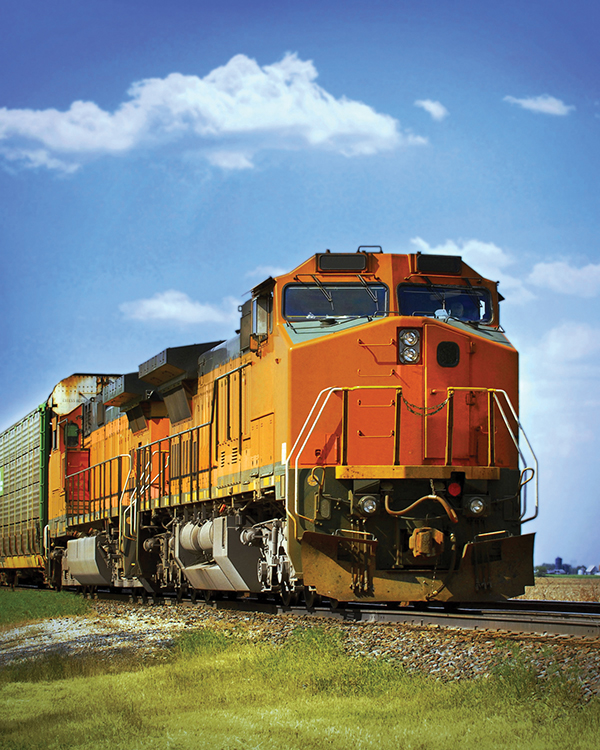
From its seat in the heart of the Permian Basin, Odessa and Ector County make up a vibrant community of approximately 300,000 people, and the region offers numerous business advantages. Midway between Fort Worth and El Paso, Odessa relies on multiple multi-lane interstate highways, two airports and a dependable rail system that offers easy shipping for critical raw materials and finished goods to Texas, North America and international markets.
Companies in the Permian Basin can access a dependable and plentiful supply of oil, natural gas and other petroleum products, with a rapidly increasing sustainable energy presence that includes solar, wind and carbon capture.
Odessa’s skilled workforce is a unique advantage for companies, possessing an inherent industrial knowledge developed from operating within the U.S.’s largest single source of oil and gas deposits.
The Midland Odessa International Airport serves as a strategic Port of Entry and Inland Port for personal and industrial needs. Located conveniently between Odessa and Midland, the airport offers service from American, Delta, Southwest and United Airlines. Service includes direct service to DFW, Dallas Love, Houston Hobby, Houston Intercontinental, Las Vegas, Phoenix and Denver. In addition, the airport is home to multiple private and contract carriers, as well as a number of air freight service operators.
Midland Odessa International Airport is located 300 miles east of El Paso and 330 miles west of Dallas on Interstate 20. This location is complemented by its connection with two federally designated high priority trade corridors providing strong north-south routes, including access to I-10 and Mexican ports, as well as, I-27, I-40, Lubbock, Amarillo, Denver and Canadian ports.
The airport is also home to a U.S. Customs Office, which is open daily Monday through Friday and by appointment after hours and weekends. Whether for business or for personal trips, the airport can serve as a Customs Port of Entry for international trips. The airport is also home to Foreign Trade Zone #165. The airport and the surrounding area comprise the primary boundaries of the FTZ; however, other areas, including local business parks, can be sub zoned in order to meet business needs.
Additionally, the Odessa area is also served by Schlemeyer Field, providing a wide array of air service, shipping and transportation opportunities.
Union Pacific (UP) Rail provides rail service to the region and is easily accessed in Odessa and Ector County. UP offers a 24-hour switching service to businesses in the area and operates seven days a week. The UP line through Odessa and Ector County offers reliable access to all U.S. and North American markets.
Efforts are currently underway to complete Interstate 14, a new Congressionally designated east-west corridor option connecting Odessa and the Permian Basin to central Texas and eventually a large number of shipping ports along the Gulf Coast. The route is being mirrored by the development of the Permian Global Access Pipeline Project. This LNG pipeline would draw from the WAHA hub, as well as a line from Jal, New Mexico, and terminate at the Driftwood Hub on the southwestern Louisiana coast. Additionally, work is underway to complete I-27 through the Permian Basin, eventually connecting markets in Mexico, West Texas and Canada. For more information, visit Only-Odessa.com.
Port of Port Angeles, Washington
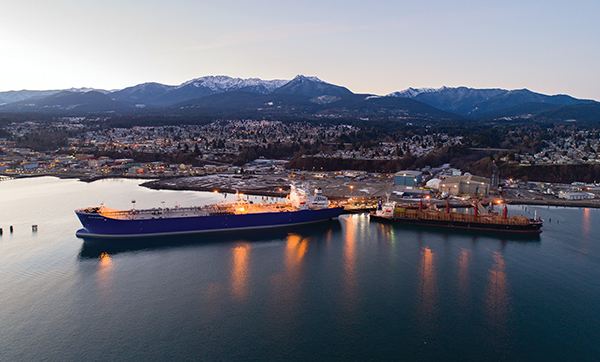
The Port of Port Angeles is a key maritime and industrial hub on the North Olympic Peninsula, serving as a vital market access point for the region. The port operates three main deepwater terminals that can accommodate up to five vessels at a time. These terminals are equipped to handle a variety of goods, including logs, lumber, pulp, paper, wood chips, chemicals, petroleum products and project cargo. The port has significant facilities for maritime activities, including pilot services, vessel repair and environmental services, making it well-suited for both inbound and outbound cargo.
The port is crucial to the economic development of Clallam County, supporting jobs and industries related to maritime trade, manufacturing and timber. The port’s activities are a significant driver of local employment, particularly in sectors such as logging and wood products, which remain central to the area’s economy.
Recent developments include the approval of a $14.196 million capital budget for 2024, which will fund various projects, including the development of the Marina Trades Center on the site of the former Peninsula Plywood mill. This project, supported by a $7.3 million grant from the U.S. Department of Commerce, is seen as a future revenue generator for the port. Additionally, the port is investing in the modernization of its facilities, such as Terminals 1 and 3, to ensure the efficient and safe movement of goods.
Looking ahead, the port is actively seeking new investments and partnerships to enhance its infrastructure and expand its capabilities. The port is working with a number of businesses to develop the industrial properties of the Port of Port Angeles.
The Port of Port Angeles primarily handles forest products, including logs, lumber and wood chips, which are exported to international markets. In addition to forest products, the port manages the import and export of chemicals, petroleum products and other general cargo, using its robust facilities and equipment designed to support heavy lifting and specialized cargo needs.
The combination of strategic location, diverse facilities and ongoing investment underscores the port’s role as a critical economic engine for the region. For more information, visit www.portofpa.com. T&ID

